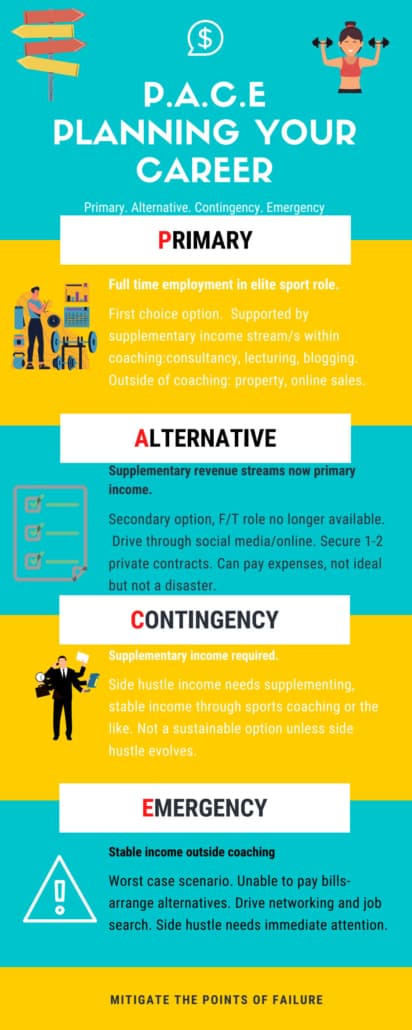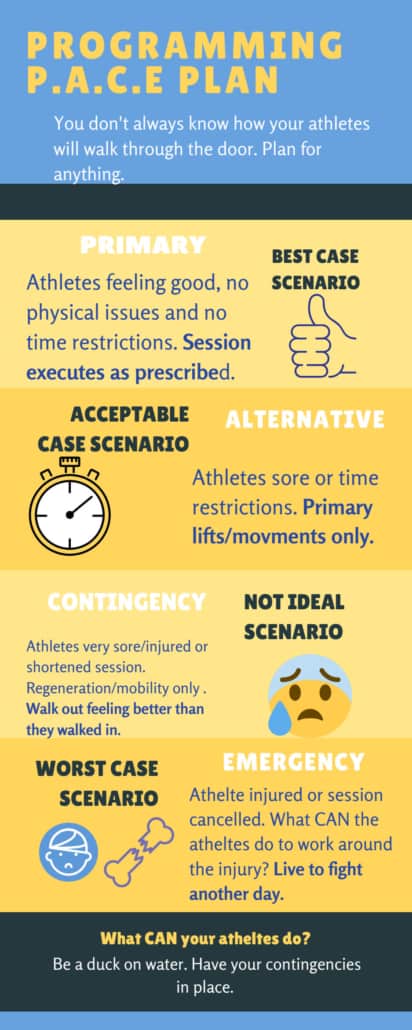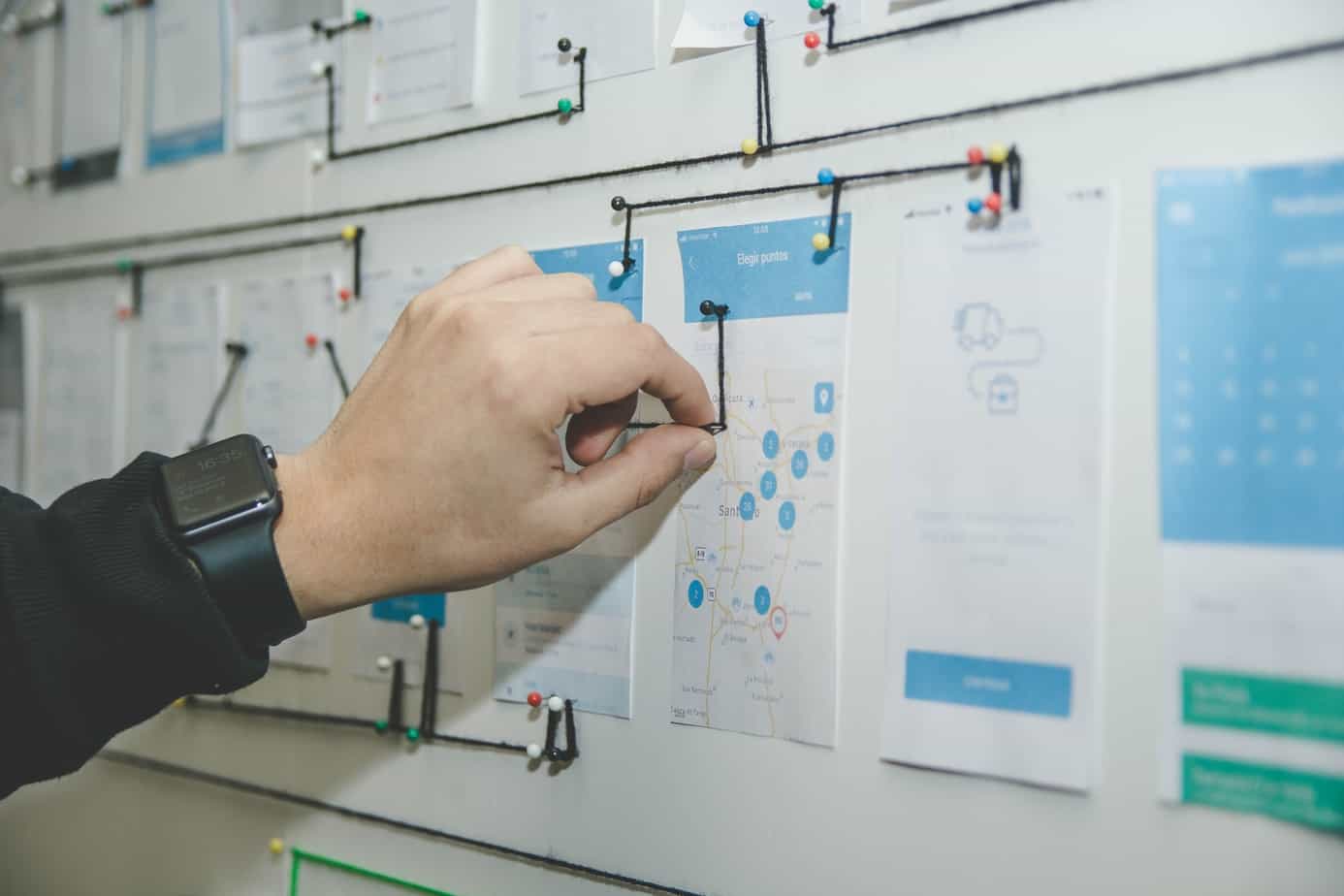Contents
- Introduction
- What is P.A.C.E. planning?
- P.A.C.E. planning a career as an S&C Coach
- P.A.C.E. planning S&C sessions
- Summary

Introduction
Primary, Alternative, Contingency, and Emergency (P.A.C.E.) planning is a military acronym used to describe communications strategies used in every imaginable eventuality in combat. The goal is to try to mitigate points of failure within the communications system, to ensure the highest possible level of success in that situation is achieved.
This system has been extended and accepted beyond just communication by military personnel, into just about all areas of their mission planning, training, simulation exercises and education delivery.
As coaches, we can and should be taking lessons learned from the military and business worlds, to broaden our understanding of effective planning and execution strategies. As such this article will use the PACE planning principles in two areas where coaches can plan more effectively to avoid losses in time, energy, stress and income. The two cases outlined in this blog post are 1) career development and 2) a strength & conditioning (S&C) session.
What is P.A.C.E. planning?
Outlined below is an overview of the concept of P.A.C.E. planning:
Primary
The first choice, best-case scenario method is used to achieve the desired outcome.
Alternative
A Plan B. The secondary and next best option if the primary and best-case scenario fails.
Contingency
This is less convenient and effective but the desired outcome can still be achieved. However, this is sometimes at a cost.
Emergency
If all else fails, then this is the worst-case scenario. This can be used to avoid being severely compromised.
P.A.C.E. planning a career as an S&C Coach
Primary
Running a successful and secure S&C business with freedom and time to develop and grow this business over time.
Alternative
Full-time employment with a stable income and job security in an S&C sports role of choice, running a successful supplementary revenue stream alongside good work and life management.
Contingency
Several part-time or small S&C roles provide a good, stable income with a side hustle or opportunity to collaborate as a secondary income.
Emergency
Stable income options may include some outside of coaching or general responsibilities where skills can be re-applied in coaching. Build connections and drive networking build links to establish new primary choices.
The general premise of the career P.A.C.E. plan is to have an exit strategy at each point to ensure they are not financially compromised should the primary options fall through.

P.A.C.E. planning S&C sessions
Pace
Athletes arrive to the session feeling good and require no session adjustments and have no time restrictions. The whole session completed is as prescribed and, in some cases, performance is exceeded beyond what was expected.
Alternative
Athletes arrive slightly sore or have a time restriction. The session is slightly adjusted, and the session is adjusted appropriately based on the athlete’s state and/or time.
Contingency
Athletes are very sore, or the session has a significant time cap. The session is adjusted to work on technical movement competency, mobility, active recovery, athlete education and rapport building.
Emergency
The session was cancelled. The athlete is injured, can’t make it due to unforeseen circumstances or hasn’t turned up. Schedule a time to check in with the physio and athlete to begin returning to function, play and perform strategies or contact the athlete to re-arrange session and/or prescribe missed work to compensate for the missed workload.

Summary
In summary, the principles of P.A.C.E. planning can be applied to multiple areas by the coach. The framework can be beneficial in an attempt to get upstream of issues, variables, and eventualities which aren’t always within the control of the coach.
Coaches cannot control everything, but they can employ a multi-layered approach to their thought process which covers the major bases. What transpires as a knock-on effect of strategic thinking is an increased ability to adapt on the go to unforeseen situations. This reduces the negative impacts of the unexpected and gives the coach the skill of thinking multiple steps




